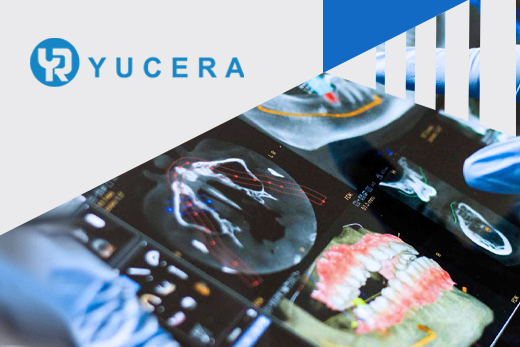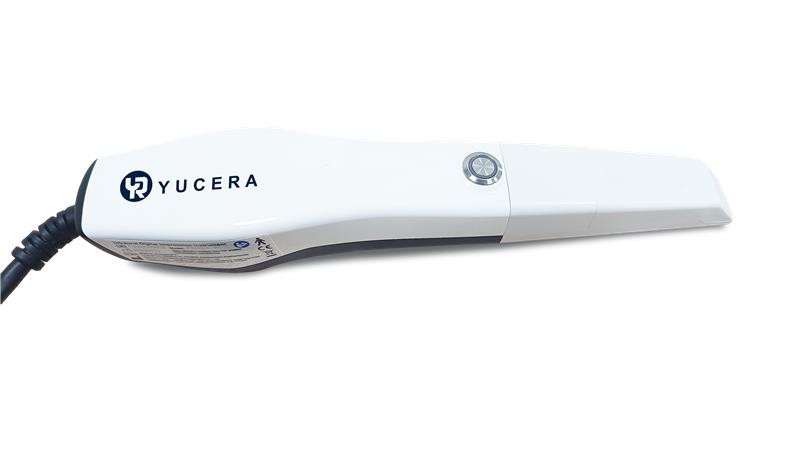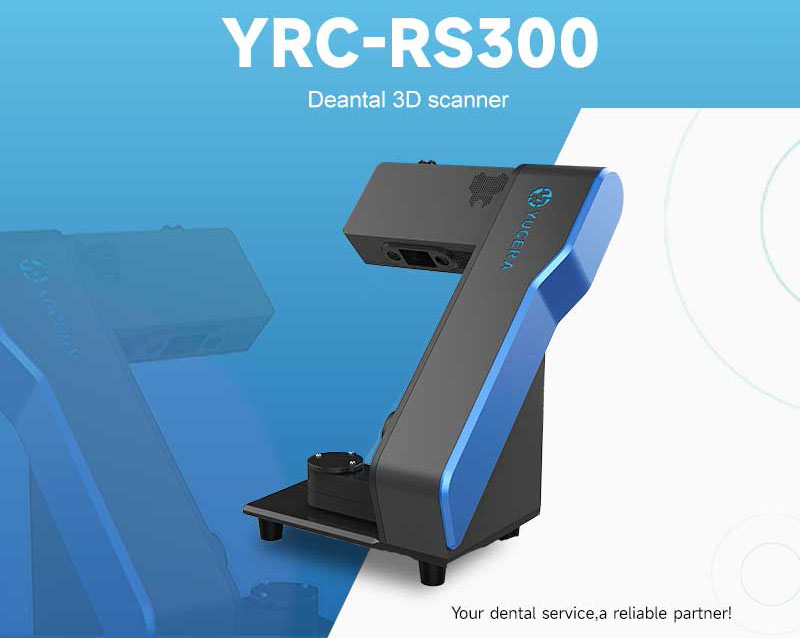Dentistry becomes fully automated with CNC machining.
2024-07-03
2024-07-08
Top 5 Digital Intraoral Scanners for Your Dental Practice

Section 1: Benefits of Digital Intraoral Scanners
Digital intraoral scanners have revolutionized dental practices by offering numerous advantages over traditional methods. Below, we explore the key benefits that these advanced tools bring to dental professionals and their patients.
Enhanced Accuracy and Precision
One of the most significant benefits of digital intraoral scanners is their ability to capture highly accurate and precise images of the oral cavity. Traditional impression materials can be prone to distortion, air bubbles, and other inaccuracies that may impact the final results. Digital scanners, on the other hand, use advanced imaging technology to create detailed and exact 3D representations of the teeth and gums. This level of precision ensures that diagnoses are more accurate and treatments are better tailored to individual patient needs.
Patient Comfort
Traditional impression-taking methods often involve the use of bulky trays filled with alginate or silicone materials, which can be uncomfortable and even gag-inducing for patients. In contrast, digital intraoral scanners are designed to be minimally invasive and comfortable. The scanning process is quick and involves the use of a small, handheld device that glides smoothly over the teeth and gums. This improvement in patient comfort can lead to a more positive experience and reduce anxiety associated with dental visits.
Time Efficiency
Time is a valuable resource in any dental practice, and digital intraoral scanners help optimize it. The traditional impression-taking process can be time-consuming, often requiring multiple attempts to achieve an accurate result. Digital scanners significantly reduce the time needed for this process. The images are captured in real-time and can be immediately reviewed and adjusted if necessary. This efficiency not only speeds up the appointment but also reduces the turnaround time for lab work, enabling quicker delivery of dental restorations and appliances.
Improved Diagnosis and Treatment Planning
Digital intraoral scanners provide high-resolution 3D images that offer a comprehensive view of the patient's oral cavity. These detailed images allow dental professionals to identify issues that may not be visible with the naked eye or traditional impressions. The improved diagnostic capabilities enable more precise treatment planning, whether it's for orthodontics, restorative dentistry, or implant placement. Additionally, the digital nature of these scans allows for easy sharing and collaboration with dental labs and specialists, ensuring that all parties have access to the same accurate information
Section 2: Criteria for Evaluating Intraoral Scanners
Choosing the right intraoral scanner for your dental practice is a critical decision that can significantly impact your workflow, patient satisfaction, and overall efficiency. To make an informed choice, consider the following essential criteria when evaluating different digital intraoral scanners:
Image Quality
The primary function of an intraoral scanner is to capture accurate, high-resolution images of the oral cavity. The quality of these images directly affects diagnostic accuracy and the effectiveness of treatment plans. Look for scanners that offer:
High Resolution: Scanners with high-resolution imaging capabilities provide clear and detailed 3D representations of teeth and gums.
Color Accuracy: Some scanners offer color scanning, which can be beneficial for shade matching in restorative dentistry.
Consistency: Ensure that the scanner consistently produces high-quality images, even in challenging areas of the mouth.
Ease of Use
A user-friendly intraoral scanner can make a significant difference in your daily operations. Consider the following aspects:
Intuitive Interface: The software should be easy to navigate, with clear instructions and minimal learning curve.
Ergonomic Design: The scanner should be lightweight and comfortable to hold, reducing fatigue during prolonged use.
Speed: Faster scanning processes can save valuable time for both practitioners and patients.
Software Integration
Seamless integration with your existing dental software and systems is crucial for maximizing the scanner's utility. Evaluate the following:
Compatibility: Ensure that the scanner is compatible with popular dental software platforms, including practice management systems and CAD/CAM software.
Updates and Upgrades: Check if the manufacturer provides regular software updates to improve functionality and add new features.
Data Export Options: The ability to export scan data in various formats (e.g., STL, PLY, OBJ) can facilitate collaboration with dental labs and specialists.
Customer Support and Training
Reliable customer support and comprehensive training are essential for a smooth transition to using a new intraoral scanner. Consider:
Technical Support: Look for manufacturers that offer prompt and effective technical support to resolve any issues that may arise.
Training Programs: Comprehensive training programs, including hands-on workshops and online resources, can help your team quickly become proficient with the scanner.
Warranty and Service Plans: Evaluate the warranty and available service plans to ensure long-term reliability and support.
Cost-effectiveness
While the initial investment in a digital intraoral scanner can be significant, it's important to consider the overall value it brings to your practice. Balance the following factors:
Initial Cost: Compare the upfront cost of different scanners, keeping in mind that higher-priced models may offer more advanced features.
Operational Costs: Consider ongoing costs such as maintenance, software subscriptions, and replacement parts.
Return on Investment (ROI): Evaluate how the scanner can improve your practice's efficiency, patient satisfaction, and revenue generation over time.
Section 3: Top 5 Digital Intraoral Scanners
Selecting the right intraoral scanner for your dental practice involves assessing various options to find the one that best meets your needs. In this section, we will explore the top 4 digital intraoral scanners on the market today, alongside your YRC-02 intraoral scanner. Each scanner will be evaluated based on key features, pros and cons, price range, and ideal use cases.
1. YRC-02 Intraoral Scanner

Name and Manufacturer
Name: YRC-02
Manufacturer: Your Company Name
Key Features
High-Resolution Imaging: Captures detailed 3D images with exceptional clarity.
AI-Powered Diagnostics: Advanced AI algorithms assist in identifying dental issues.
Ergonomic Design: Lightweight and easy to handle, reducing operator fatigue.
Seamless Software Integration: Compatible with popular dental software and CAD/CAM systems.
Real-Time Scanning: Provides immediate feedback and high-speed image processing.
Pros
Exceptional Image Quality: High-resolution images enhance diagnostic accuracy.
User-Friendly Interface: Intuitive software makes it easy for dental professionals to use.
Excellent Customer Support: Comprehensive training programs and responsive technical support.
Competitive Pricing: Offers a good balance of advanced features at a reasonable price.
Cons
Relatively New in the Market: Limited long-term usage data available.
Initial Setup and Calibration: May require some time for initial setup and calibration.
Price Range
[Insert Price Range]
Ideal For
Dental practices looking to adopt cutting-edge technology while maintaining cost-effectiveness and ease of use.
2. 3Shape TRIOS
Name and Manufacturer
Name: 3Shape TRIOS
Manufacturer: 3Shape
Key Features
High-Resolution 3D Scanning: Provides precise and detailed digital impressions.
Color Scanning: Captures shade information for more accurate restorations.
Wireless Option: Available in both wired and wireless models.
Advanced Software: Integration with 3Shape Dental System for comprehensive treatment planning.
Pros
Excellent Image Quality: High accuracy and resolution.
Versatility: Suitable for a wide range of dental applications.
Wireless Convenience: Offers freedom of movement with the wireless model.
Cons
Higher Cost: Generally more expensive compared to some other scanners.
Learning Curve: Advanced features may require additional training.
Price Range
[Insert Price Range]
Ideal For
Dental practices prioritizing high-quality imaging and advanced treatment planning capabilities.
3. Medit i500
Name and Manufacturer
Name: Medit i500
Manufacturer: Medit
Key Features
High-Speed Scanning: Fast and efficient scanning process.
Impressive Accuracy: High precision for detailed digital impressions.
Open System: Easy integration with third-party CAD/CAM software.
Lightweight Design: Ergonomic and comfortable to use.
Pros
Cost-Effective: Offers excellent value for money.
Fast and Efficient: Quick scanning speeds improve workflow efficiency.
Open Architecture: Flexible integration options.
Cons
Initial Software Bugs: Some users reported software issues, though updates have addressed many of these.
Limited Features Compared to High-End Models: May lack some advanced features found in more expensive scanners.
Price Range
[Insert Price Range]
Ideal For
Dental practices looking for a cost-effective scanner with fast, accurate scanning capabilities.
4. Yucera YC-300

Name and Manufacturer
Name: Yucera YC-300
Manufacturer: Yucera
Key Features
High-Resolution Scanning: Captures accurate and detailed 3D images.
User-Friendly Interface: Easy-to-use software for efficient operation.
Compact Design: Lightweight and portable scanner.
Efficient Data Processing: Quick and reliable data output.
Pros
Affordable: Competitive pricing for high-quality imaging.
Portable: Compact design makes it easy to handle and transport.
User-Friendly: Simple software interface reduces learning curve.
Cons
Limited Advanced Features: May lack some of the capabilities of higher-end models.
Support and Training: May require additional resources for comprehensive training.
Price Range
[Insert Price Range]
Ideal For
Dental practices seeking an affordable, user-friendly scanner for routine imaging needs.
5. Shining3D Aoralscan
Name and Manufacturer
Name: Shining3D Aoralscan
Manufacturer: Shining3D
Key Features
High-Resolution Imaging: Provides sharp and detailed digital impressions.
AI-Powered Features: AI algorithms enhance scanning performance and accuracy.
Ergonomic Design: Comfortable to use, even during extended scanning sessions.
Comprehensive Software: Integration with Shining3D's dental software suite.
Pros
High-Quality Images: Excellent resolution and clarity.
AI Enhancements: Improves scanning efficiency and accuracy.
Ergonomic and Comfortable: Easy to handle and use.
Cons
Mid-Range Pricing: More affordable than high-end models but still a significant investment.
Compatibility: Ensure compatibility with existing dental software systems.
Price Range
Ideal For
Dental practices looking for a high-quality scanner with AI-enhanced features and good ergonomics.
Section 4: Comparison Table
To help you make an informed decision, we have compiled a comparison table that summarizes the key features, price ranges, and user ratings of the top 5 intraoral scanners discussed in the previous section. This table provides a quick reference to evaluate the scanners side by side, highlighting their unique attributes and suitability for various dental practice needs.

|
Scanner |
Key Features |
Price Range |
User Rating |
Ideal For |
|
YRC-02 |
High-Resolution Imaging, AI-Powered Diagnostics, Ergonomic Design, Seamless Software Integration, Real-Time Scanning |
Contact Us |
[Insert Rating] |
Dental practices looking for cutting-edge technology with cost-effectiveness |
|
3Shape TRIOS |
High-Resolution 3D Scanning, Color Scanning, Wireless Option, Advanced Software Integration |
Not provided |
|
Practices prioritizing high-quality imaging and advanced treatment planning |
|
Medit i500 |
High-Speed Scanning, Impressive Accuracy, Open System, Lightweight Design |
Not provided |
|
Cost-effective solution with fast, accurate scanning capabilities |
|
Yucera YC-300 |
High-Resolution Scanning, User-Friendly Interface, Compact Design, Efficient Data Processing |
Contact Us |
|
Affordable, user-friendly scanner for routine imaging needs |
|
Shining3D Aoralscan |
High-Resolution Imaging, AI-Powered Features, Ergonomic Design, Comprehensive Software Integration |
Not provided |
|
High-quality scanner with AI-enhanced features and good ergonomics |
Introduction to the Table
The above table offers a snapshot of the essential characteristics of each intraoral scanner. By comparing key features, price ranges, and user ratings, you can quickly identify which scanner aligns best with your practice’s specific requirements.
Detailed Comparison
YRC-02
Key Features: The YRC-02 stands out with its high-resolution imaging and AI-powered diagnostics, making it an excellent choice for dental practices looking for advanced technology. Its ergonomic design and seamless software integration further enhance its appeal.
Price Range: [Insert Price Range]
User Rating: [Insert Rating]
Ideal For: Dental practices that want a balance of advanced features and cost-effectiveness.
3Shape TRIOS
Key Features: Known for its high-resolution 3D scanning and color scanning capabilities, the 3Shape TRIOS offers advanced features that are ideal for comprehensive treatment planning. The availability of a wireless option adds to its convenience.
Price Range: [Insert Price Range]
User Rating: [Insert Rating]
Ideal For: Practices that prioritize high-quality imaging and advanced treatment planning capabilities.
Medit i500
Key Features: The Medit i500 is renowned for its high-speed scanning and impressive accuracy. Its open system allows for easy integration with third-party CAD/CAM software, making it a versatile choice for many practices.
Price Range: [Insert Price Range]
User Rating: [Insert Rating]
Ideal For: Dental practices seeking a cost-effective solution with fast, accurate scanning capabilities.
Yucera YC-300
Key Features: This scanner is valued for its high-resolution scanning and user-friendly interface. Its compact design and efficient data processing make it a practical choice for routine imaging needs.
Price Range: [Insert Price Range]
User Rating: [Insert Rating]
Ideal For: Practices looking for an affordable, user-friendly scanner for everyday use.
Shining3D Aoralscan
Key Features: The Shining3D Aoralscan offers high-resolution imaging with AI-powered features that enhance scanning performance. Its ergonomic design and comprehensive software integration make it a robust option.
Price Range: [Insert Price Range]
User Rating: [Insert Rating]
Ideal For: Dental practices that want a high-quality scanner with AI-enhanced features and good ergonomics.
Section 5: How to Implement a Digital Intraoral Scanner in Your Practice
Integrating a digital intraoral scanner into your dental practice can significantly enhance your diagnostic capabilities, streamline workflows, and improve patient satisfaction. However, successful implementation requires careful planning and execution. In this section, we'll guide you through the essential steps for integrating a digital intraoral scanner, ensuring a smooth transition and maximizing the benefits of this advanced technology.
Initial Setup
1. Selecting the Right Scanner
Evaluate Your Needs: Consider the specific requirements of your practice, including budget, workflow, and the types of procedures you perform most frequently.
Consult with the Manufacturer: Reach out to the manufacturer or supplier for detailed information on the scanner's features and capabilities. They can provide insights tailored to your practice's needs.
2. Preparing Your Practice
Infrastructure Assessment: Ensure that your practice's IT infrastructure, including computers and network systems, can support the new scanner's software and data storage needs.
Physical Setup: Designate a suitable location for the scanner within your practice, ensuring easy access for both staff and patients.
3. Installation Process
Professional Installation: Many manufacturers offer professional installation services. Utilize these services to ensure the scanner is set up correctly and optimized for your practice environment.
Software Configuration: Install and configure the scanner's software, ensuring it integrates seamlessly with your existing dental software and systems.
Training Staff
1. Comprehensive Training Programs
On-Site Training: Arrange for on-site training sessions where professional trainers can provide hands-on instruction to your staff.
Online Resources: Utilize online training modules, webinars, and tutorials provided by the manufacturer to supplement in-person training.
2. Ongoing Education
Continuous Learning: Encourage your staff to participate in ongoing education programs to stay updated on new features and best practices.
Certifications: Consider obtaining certifications offered by the manufacturer to demonstrate proficiency with the scanner.
Integrating with Existing Systems
1. Compatibility Check
Software Integration: Verify that the scanner's software is compatible with your practice management system, CAD/CAM software, and any other digital tools you use.
Data Formats: Ensure that the scanner can export data in the formats required by your lab and other collaborators (e.g., STL, PLY, OBJ).
2. Workflow Optimization
Streamlined Processes: Adjust your practice's workflow to incorporate the scanner efficiently. This may involve redefining roles, modifying appointment scheduling, and updating standard operating procedures.
Data Security: Implement robust data security measures to protect patient information and comply with relevant regulations.
Patient Communication
1. Introducing the Technology
Educate Patients: Explain the benefits of the new technology to your patients, emphasizing improved diagnostic accuracy, comfort, and faster turnaround times.
Visual Aids: Use visual aids, such as brochures, videos, and demonstrations, to help patients understand how the scanner works and what to expect during the procedure.
2. Building Trust
Transparency: Be transparent about how the scanner enhances their treatment experience and outcomes.
Feedback: Encourage patient feedback to address any concerns and continuously improve the scanning process.